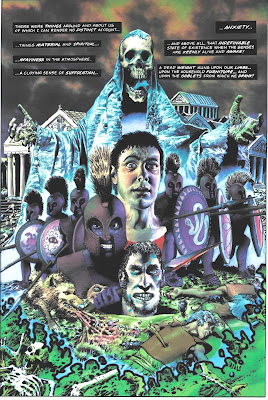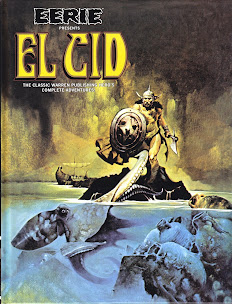'All Review Special'
edited by Justin Marriott
June 2019
Here's another volume of interest to paperback collectors and readers from the publishing firm of Justin Marriott, producer of The Paperback Fanatic and numerous other 'bookzines' dedicated to vintage paperbacks.
(My review of The Sleazy Reader is available here.)
'Men of Violence: All Review Special' ($5.99, 93 pp) features reviews (limited to 250 words for an individual book and 500 words for a series) of over 100 paperbacks and comics published from 1953 to the present day, that fall (more or less) into the genre of 'Men's Adventure' fiction.
Needless to say, we live in an era in which men rarely read for pleasure, the genre of Men's Adventure is regarded as affront to a Woke society, and any adolescent who brings a copy of Torture Love Cage (Jack Savage, 1959) to school probably will be expelled, and obliged to receive Counseling before being readmitted.............
The contributors to the 'All Review Special' all are individuals familiar with the genre (some are reviewers for The Paperback Fanatic and its associated titles).
Along with expected entrants, such as 'Nick Carter', 'The Butcher', 'The Penetrator', and 'The Death Merchant', there are quite a few more-obscure series and titles that I'd never heard of, indicating that the genre is considerably more idiosyncratic than one might expect.
For the most part, the reviews serve their purpose in giving the reader an easily graspable overview of the novel without disclosing spoilers (this is important !). Not every title in this volume has a high rating, but there certainly are a number of entries for which my interest was sufficiently piqued as to send me to the usual online outlets to make some transactions.
In such instances it's worthwhile to have read the 'All Review Special' to have an existing awareness of what to look for, in those trips to the used bookstore in search of hidden treasures.
For my part, I've picked up my own copy of Bloody Vengeance by Jack Ehrlich (1973).
Summing up, if you're a reader, a collector, or both, then I recommend getting a copy of 'Men of Violence: The All Review Special'.












































































